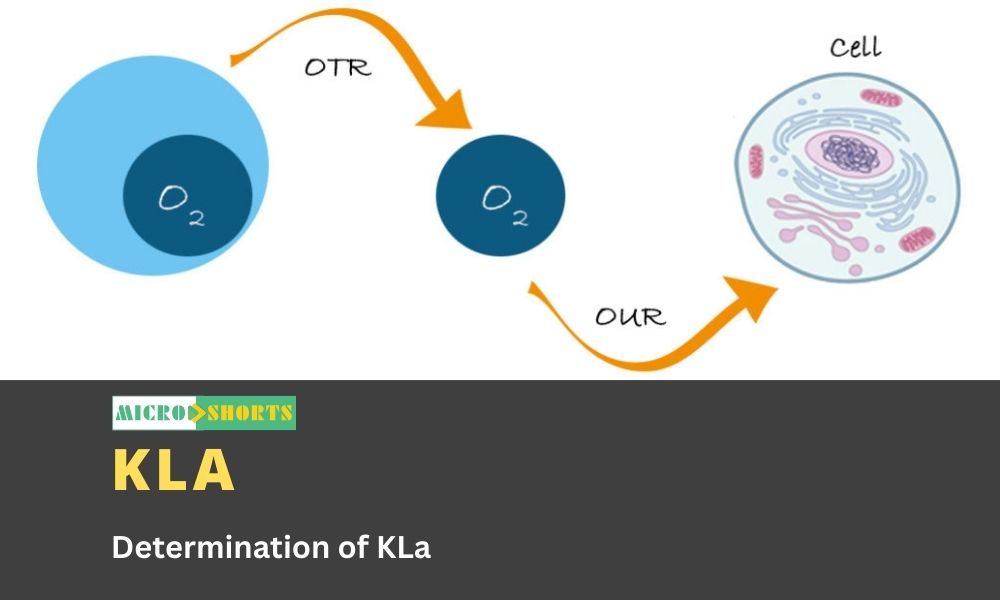Introduction
Food is any edible material or substance consumed to fulfill daily nutritional requirements. It contains essential nutrients (substances that provide nourishment), such as carbohydrates, proteins, fats, vitamins, minerals, and water, which are necessary for the body. These nutrients aid in growth, development, repair, and maintenance of the body’s mechanisms.
What is Nutrition?
Nutrition is the study of nutrients in food and how the body utilizes them. Discovered by Antoine Lavoisier (Father of Chemistry and Nutrition), nutrition involves consuming, absorbing, and using nutrients (process of intake and utilization of nutrients) from food. Proper nutrition is essential for maintaining health and preventing diseases.
The Definition of Nutrition
According to Collins Dictionary, nutrition is defined as "the process of taking food into the body and absorbing nutrients." Proper nutrition ensures the body gets what it needs to function optimally. Lack of proper nutrition can lead to conditions like heart disease, cancer, depression, and more.
Importance of Proper Nutrition
- Provides energy and raw materials for growth and repair
- Helps prevent infections
- Ensures proper body function and maintenance
- Enhances physical and mental health
Examples:
- Zea mays (Corn) – maize
- Solanum tuberosum (Potato) – aloo
- Oryza sativa (Rice) – dhan
Social and Psychological Functions of Food
- Regulates body functions like metabolism (chemical processes within organisms)
- Maintains homeostasis (body's stable internal environment)
- Supports emotional well-being and social connections
Factors Affecting Food and Nutrition
Individual Factors
- Gender and genetics
- Personal preferences and experience
- Biochemical availability and nutritional habits
Health and Lifestyle Factors
- Activity level
- Addiction habits
- Nutritional deficiencies
Classification of Foods
Foods can be classified based on their origin, chemical composition, predominant function, and sources. This classification helps in understanding their role in human nutrition and health. Below is a breakdown of these categories.
1. Classification of Foods by Origin
- Foods of animal origin: Meat, fish, poultry, eggs, and dairy products.
- Foods of vegetable origin: Cereals, vegetables, fruits, legumes, and nuts.
Examples:
- Triticum aestivum (Wheat) – Gehu
- Pisum sativum (Pea) – Matar
- Bos taurus (Cattle) – Gai
2. Classification of Foods by Chemical Composition
- Proteins: Essential for body-building and repair.
- Fats: Concentrated source of energy.
- Carbohydrates: Primary energy source.
- Vitamins: Help in metabolic functions.
- Minerals: Required for various biochemical processes.
3. Classification of Foods by Predominant Functions
- Body-building foods: Include meat, milk, poultry, fish, groundnuts, eggs, and pulses (legumes rich in protein).
- Energy-providing foods: Examples include cereals, sugars, tubers, fats, and oils.
- Protective foods: Help in repairing and maintaining the body, such as vegetables, fruits, and milk.
4. Classification of Foods by Sources
- Cereals: Wheat, rice, maize.
- Millets: Sorghum, finger millet.
- Legumes (Pulses): Beans, lentils.
- Green Vegetables: Spinach, cabbage.
- Fruits: Apples, mangoes.
- Meat: Chicken, beef.
- Fish: Tuna, salmon.
- Eggs: Hen eggs.
- Milk: Cow milk, goat milk.
- Fats and oils: Butter, olive oil.
- Nuts and oilseeds: Almonds, sunflower seeds.
- Sugar: Sugarcane.
- Jaggery: A natural sweetener made from sugarcane or palm.
- Condiments and spices: Pepper, turmeric.
Classification of Nutrients
Nutrients are essential organic and inorganic compounds present in food, playing key roles in various bodily functions. They are classified based on energy yield, quantity needed, and carbon structure.
1. Energy Yielding Nutrients
- Proteins: Provide 4 kcal/g of energy.
- Fats: Provide 9 kcal/g of energy.
- Carbohydrates: Provide 4 kcal/g of energy.
2. Quantity Needed in the Body
- Macronutrients: Required in large amounts, measured in kg or g (e.g., proteins, fats).
- Micronutrients: Required in small amounts, measured in mg or μg (e.g., vitamins, minerals).
3. Carbon Structure
- Organic nutrients: Include carbohydrates, fats, proteins, and vitamins (contain carbon).
- Inorganic nutrients: Include minerals and water (do not contain carbon).
What are Nutrients?
Nutrients are the organic and inorganic compounds found in food that are essential for the body's normal functioning. Foods supply the body with about 50 different nutrients, each with specific functions.
Types of Nutrients
Macronutrients (energy-producing):
- Carbohydrates
- Proteins
- Fats
- Water
Micronutrients (protective):
- Minerals
- Vitamins
Macronutrients
The word macro means "big." Humans require macronutrients in large quantities to sustain life. Each macronutrient has specific pathways and functions and provides energy to our bodies. The total energy intake from macronutrients comes from carbohydrates (60-80%), fats (10-30%), and proteins (7-15%).
Carbohydrates
Carbohydrates, the most abundant organic substances, are composed of molecules containing carbon (C), hydrogen (H), and oxygen (O). They have the general formula C6H12O6. The energy source lies in the carbon atom, which helps oxidize fats and synthesize non-essential amino acids.
Examples: Solanum lycopersicum (Tomato), Musa acuminata (Banana), Pisum sativum (Pea).
Types of Carbohydrates
Carbohydrates are categorized into three types:
- Sugar
- Starch
- Fiber
1. Sugar
Sugar is the simplest form of carbohydrate and provides energy rapidly. The body quickly breaks down simple carbohydrates into glucose, which raises blood sugar levels. Glucose is the main energy source for cells, tissues, and organs.
- Naturally occurring sugars: Milk, fresh fruits.
- Added sugars: Sweets, soda, juice.
Examples: Saccharum officinarum (Sugarcane), Phoenix dactylifera (Date palm), Cocos nucifera (Coconut).
2. Starch
Starch (amylum) is a complex carbohydrate that breaks down into glucose in the body. It consists of two types: amylose (linear polymer) and amylopectin (branched polymer). Foods rich in starch include grains, vegetables, and fruits. The breakdown process is slow, stabilizing blood sugar levels.
Examples: Zea mays (Corn), Oryza sativa (Rice), Solanum tuberosum (Potato).
3. Fiber
Fiber is a complex carbohydrate that does not break down into glucose. It helps digestion by passing through the intestines. There are two types of fibers: soluble (dissolves in water) and insoluble (does not dissolve). Fiber helps regulate blood sugar, aids digestion, and lowers cholesterol levels.
Examples: Brassica oleracea (Broccoli), Prunus persica (Peach), Juglans regia (Walnut).
Functions of Carbohydrates
- Provide energy to the body.
- Aid in fat oxidation for energy.
- Stimulate intestinal motility and prevent constipation.
- Synthesize vitamin B complex.
- Assist in the absorption of minerals.
- Support the growth of beneficial bacteria.
- Play a role in the biosphere by providing nutrition to humans.
Disorders Due to Excess Carbohydrate Intake
- Obesity.
- Dental caries (cavities).
- Elevated insulin levels, increasing the risk of blood clotting.
Excessive consumption of carbohydrates can lead to various health issues, emphasizing the need to maintain a balanced diet.
Proteins
Proteins are organic compounds made up of amino acids that contain C (carbon), H (hydrogen), O (oxygen), and N (nitrogen) atoms. Proteins are fully digestible and essential for the body as they provide nutrition and help in building and repairing tissues. Proteins supply 4 kcal/g of energy.
Amino Acids in Proteins
There are 20 amino acids in proteins. They are categorized into two types:
a. Essential amino acids: Must be obtained from food.
Examples include leucine, isoleucine, valine, histidine, and lysine.
b. Non-essential amino acids: Produced by the body.
Recommended Daily Allowance (RDA)
The RDA for protein varies by age and sex:
- Adults: 35-56 g/day
- Pregnant and lactating women: 71 g/day
Sources of Protein
Protein-rich foods include:
- Plant-based foods: Beans (black beans, lima beans), broccoli
- Animal-based foods: Chicken breast, fish (salmon), eggs
- Other sources: Spirulina, quinoa, and protein powders
Scientific names:
- Phaseolus vulgaris (black beans)
- Brassica oleracea (broccoli)
- Salmo salar (salmon)
Types of Protein
Proteins are classified into two categories:
a. Complete protein:
Contains all essential amino acids. Commonly found in animal-based foods like meat, fish, milk, and eggs.
b. Incomplete protein:
Contains some but not all essential amino acids. Found in plant-based foods like cereals, legumes, and peanuts.
Functions of Protein
- Supports growth, maintenance, and repair of body tissues
- Produces hormones, enzymes, and immune cells
- Regulates acid-base balance by controlling ion movement
- Maintains fluid balance by controlling osmotic pressure
- Provides energy (1 gram = 4 kcal)
- Promotes fullness and aids in muscle maintenance
Protein Deficiency
A lack of protein can lead to:
- Kwashiorkor (swelling) and Marasmus (wasting)
- Impaired immunity and susceptibility to infections
- Nutritional edema and poor wound healing
- Muscle weakness, apathy, and depression
Fats
Fats are triglycerides (a type of fat) consisting of three fatty acids and one glycerol molecule (a water-soluble carbohydrate). They are an essential part of the diet, providing energy and supporting cell function. Males should consume 20-30 gm/day, while females should consume 20-40 gm/day.
Sources of Fats
Animal sources: Ghee, butter, fat of meat, fish oils.
Vegetable sources: Groundnut oil, mustard oil, cottonseed oil.
Types of Fats
There are three types of fats:
- Saturated fats
- Unsaturated fats
- Trans fats
1. Saturated Fats
Saturated fats are non-essential fatty acids (solid at room temperature) like butyric acid, palmitoleic acid, and stearic acid. These fats are primarily found in animal foods such as meat, coconut oil, and palm oil. Excessive intake can increase cholesterol levels in arteries.
Examples: Sausage, bacon, butter.
Scientific name: Cocos nucifera (Coconut), Elaeis guineensis (Oil palm), Bos taurus (Beef).
2. Unsaturated Fats
Unsaturated fats are liquid at room temperature and are either essential or non-essential fatty acids. They include linoleic acid and oleic acid and are found in vegetable oils. Unsaturated fats reduce LDL cholesterol and stabilize heart rhythms.
Types of Unsaturated Fats
Monounsaturated fats:
- Rich in omega-9 fatty acids.
- Found in olive oil, nuts, and seeds.
Polyunsaturated fats:
- Include omega-3 fatty acids and omega-6 fatty acids.
- Sources: Fish, walnuts, flax seeds. These fats help lower triglyceride levels and improve heart health.
Examples: Olive oil, walnuts, salmon.
Scientific name: Olea europaea (Olive), Juglans regia (Walnut), Salmo salar (Atlantic salmon).
3. Trans Fats
Trans fats are unhealthy and solid at room temperature. They are commonly found in partially hydrogenated oils. Trans fats raise LDL cholesterol and lower HDL cholesterol, increasing heart disease risk.
Examples: Margarine, chips, cookies.
Scientific name: Arachis hypogaea (Peanut), Triticum aestivum (Wheat), Zea mays (Corn).
Functions of Fats
- Promote fat-soluble vitamin absorption.
- Help insulate and regulate body temperature.
- Cushion and protect the body’s organs.
- Stabilize heart rhythms and lower heart attack risks.
- Improve skin and hair health.
- Absorb vitamins A, D, E, and K.
Excess Intake of Fats
- Can lead to obesity.
- Increase risk of atherosclerosis and coronary heart disease.
- Can cause type II diabetes and gallbladder stones.
Water
People should consume 2.7 to 3.7 liters/day of water to maintain health. It supports many bodily functions like digestion, circulation, and excretion. Water also acts as a solvent (substance in which other substances dissolve) and helps regulate body temperature.
Functions of Water
Water has several vital functions:
- Assists in digestion, absorption, circulation, and excretion.
- Acts as a solvent for body constituents.
- Regulates body temperature.
- Lubricates moving body parts.
- Carries essential nutrients.
Scientific Names and Local Names:
- Pisum sativum (Pea)
- Solanum tuberosum (Potato)
- Triticum aestivum (Wheat)
Micronutrients
Micronutrients are nutrients required in small amounts. They support many pathways in the body. Examples include fortified cereals and rice. Micronutrients come in two main forms:
- Minerals
- Vitamins
Minerals
Minerals are essential inorganic elements (non-living compounds). They include iron, potassium, sodium, and calcium. Lack of minerals can lead to diseases, and doctors may recommend supplements. Examples: meat, fish, milk, green leafy vegetables, legumes.
Types of Minerals
a. Major Minerals
The major minerals include calcium, phosphorus, sodium, potassium, magnesium, and sulfur.
Adults should consume 4700 mg/day of potassium.
Examples: avocados, bananas, coconut water.Sodium intake should be limited to 2300 mg/day.
Example: Table salt.Adults need 1000 mg/day of calcium.
Examples: dairy products, tofu, green leafy vegetables.
Trace Elements
Trace elements are required in smaller amounts. They include iron, zinc, iodine, and selenium.
Adults need 8 mg/day of iron, but women of reproductive age should consume 18 mg/day.
Examples: lentils, beef liver, spinach.Zinc intake for women should be 8 mg/day and 11 mg/day for men.
Examples: fortified cereals, oysters, beef.
Scientific Names and Local Names:
- Spinacia oleracea (Spinach)
- Phaseolus vulgaris (Common bean)
- Glycine max (Soybean)
Functions of Minerals
Minerals perform essential roles in the body:
- Potassium regulates kidney, heart, muscle, and nerve functions.
- Sodium aids nerve and muscle function, regulating body fluids.
- Calcium supports bone and teeth formation and cardiovascular health.
- Iron helps in red blood cell formation and oxygen transportation.
- Zinc supports immune function and wound healing.
High and Low Intake of Minerals
Too much or too little mineral intake can cause health problems:
- High potassium intake may lead to kidney disease; low intake can cause high blood pressure.
- High calcium intake may cause kidney stones; low intake can weaken bones.
Vitamins
Vitamins are organic compounds (carbon-based) crucial for body functions. They are divided into two types: fat-soluble vitamins (stored in fat tissues) and water-soluble vitamins (used immediately by the body). These micronutrients are vital in small amounts for various physiological processes.
Fat-Soluble Vitamins
Fat-soluble vitamins include Vitamins A, D, E, and K.
a. Vitamin A
Adults need 600 μg of retinol (active form) or 2400 μg of beta-carotene (plant-based precursor). Vitamin A is essential for vision and cell growth. Sources: Retinol (liver, meat, fatty fish) and beta-carotene (dark green vegetables).
Examples:
- Daucus carota (Carrot)
- Spinacia oleracea (Spinach)
- Brassica oleracea (Broccoli)
b. Vitamin D
Humans require Vitamin D2 (Calciferol) from plants and Vitamin D3 (Cholecalciferol) from animals. 2.5 mcg of Vitamin D should be consumed daily. It is synthesized by sunlight exposure.
Examples:
- Hippoglossus hippoglossus (Atlantic halibut)
- Gallus gallus (Chicken)
- Oncorhynchus mykiss (Rainbow trout)
c. Vitamin E
Also called tocopherol, adults should consume 10 mg/day. It prevents oxidative damage and supports reproductive health.
Examples:
- Juglans regia (Walnut)
- Helianthus annuus (Sunflower)
- Brassica oleracea (Kale)
d. Vitamin K
Vitamin K has two types: Phylloquinone (K1) and Manaquinone (K2). It plays a role in blood clotting. K1 comes from leafy greens, while K2 is synthesized by gut bacteria.
Examples:
- Brassica oleracea var. italica (Broccoli)
- Spinacia oleracea (Spinach)
- Lactuca sativa (Lettuce)
Water-Soluble Vitamins
Water-soluble vitamins include B-vitamins and Vitamin C.
Vitamin B1 (Thiamine)
Adults need 1–2 mg/day of thiamine for carbohydrate metabolism. It is found in cereals, nuts, and pulses.
Examples:
- Pisum sativum (Pea)
- Arachis hypogaea (Peanut)
- Phaseolus vulgaris (Kidney beans)
Vitamin B2 (Riboflavin)
Adults require 1–2 mg/day of riboflavin to aid in energy production.
Examples:
- Spinacia oleracea (Spinach)
- Brassica oleracea (Kale)
- Lactuca sativa (Lettuce)
Vitamin B3 (Niacin)
Niacin supports DNA repair and regulates cholesterol. 20 mg/day of B3 is recommended.
Examples:
- Zea mays (Corn)
- Cicer arietinum (Chickpea)
- Glycine max (Soybean)
Vitamin C (Ascorbic Acid)
Vitamin C, a heat-sensitive vitamin, is crucial for collagen production and tissue repair. Adults need 40 mg/day.
Examples:
- Citrus limon (Lemon)
- Capsicum annuum (Bell pepper)
- Brassica oleracea var. gemmifera (Brussels sprouts)
Functions of Vitamins
- Vitamin A: Maintains vision and skeletal growth. Prevents infections.
- Vitamin D: Aids calcium absorption and promotes bone health.
- Vitamin E: Acts as an antioxidant.
- Vitamin K: Promotes blood clotting and liver function.
- Vitamin B1: Supports the nervous system.
- Vitamin B2: Helps with energy production.
- Vitamin C: Essential for collagen formation.
Vitamin Deficiencies
- Vitamin A: Causes night blindness and corneal damage.
- Vitamin D: Leads to rickets and osteomalacia.
- Vitamin E: Reduces red blood cell count and damages muscles.
- Vitamin K: Can result in hemorrhage.
- Vitamin B1: Causes beriberi and Wernick’s encephalopathy.
- Vitamin C: Causes scurvy and poor wound healing.









Comments